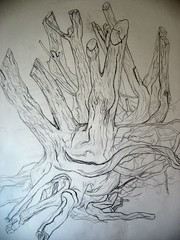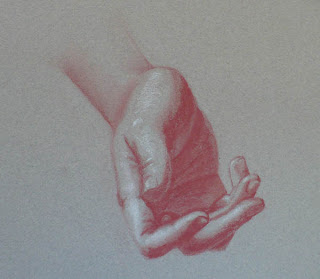Aerial perspective: creates a sense of space through depicting the effects of atmospheric conditions
these conditions effect our perception of shape,color,texture,value, and size
Linear perspective: is the theory developed in the Renaissance based on the observation that parallel lines converge as they move into space.
*the point where they converge is the Vanishing Point
When drawing from life, the scene is translated from a set viewing position. The viewer's eye-level establishes the Horizon line: an imaginary horizontal line parallel to the viewers eyes.
The vanishing point or points are set on the horizon line.

1 point perspective is usually used in situations in which the subject is parallel or perpendicular to the picture plane.

2 point perspective- uses 2 vanishing points. 2 vanishing points are used when the subject(s) are oblique (slanting/sloping lines and planes that are neither parallel nor perpendicular) to the picture plane.


To be continued...





















